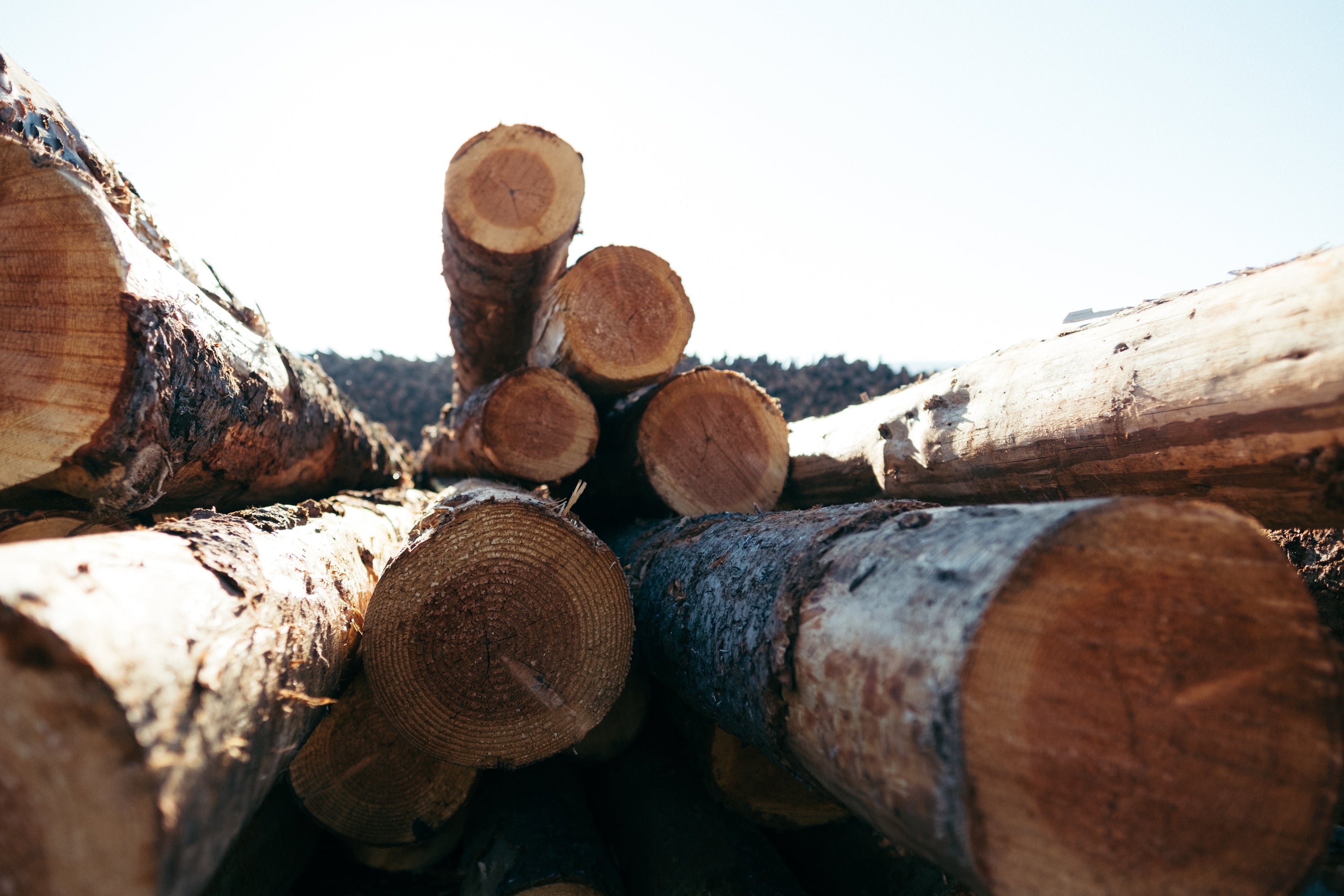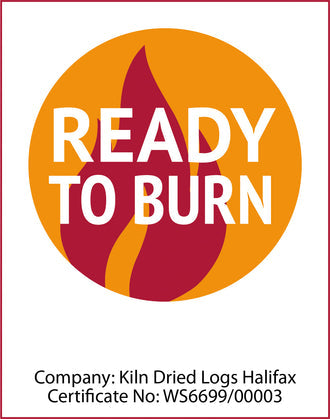Home
Tips and Insights
Mastering Moisture Content for Firewood: From Green Wood to Kiln-Dried — All You Need to Know

Mastering Moisture Content for Firewood: From Green Wood to Kiln-Dried — All You Need to Know
Understanding firewood moisture content represents the fundamental difference between efficient, clean-burning fires and frustrating, smoky experiences. Moisture content, expressed as a percentage, indicates water present in wood relative to its dry weight and profoundly impacts ignition, heat output, and emissions.
When wood contains excessive moisture, energy diverts to evaporating water instead of heating your home. This explains why wet wood produces less heat and burns inefficiently. Professional suppliers like Kiln Dried Logs Halifax invest in controlled drying processes to deliver consistently low-moisture firewood that performs reliably, understanding this wood science intimately.
Classification of Firewood by Moisture Content
Firewood classification based on moisture content follows established industry standards that correlate with performance characteristics and burning efficiency. Understanding these classifications enables informed purchasing decisions and proper firewood management for optimal results.
Green wood typically contains moisture content exceeding 60 percent and can reach 80-100 percent in some species. This recently harvested wood exhibits substantial weight, tight bark adhesion, absence of end cracking, and fresh appearance. When burned, green wood produces excessive smoke, minimal heat output, and significant ignition difficulty since combustion energy evaporates water rather than producing usable heat.
Partially seasoned firewood falls between 20-60 percent moisture content, representing wood undergoing some natural drying but not reaching optimal burning conditions. This wood may display moderate end checking, some bark loosening, and reduced weight compared to green wood. While burning more readily than green wood, it still produces suboptimal heat output and excessive smoke.
Seasoned firewood, containing less than 20 percent moisture content, meets minimum standards for effective burning. Properly seasoned wood air-dried for 12-24 months exhibits pronounced end checking, loose or missing bark, lighter weight, and grayish appearance on exposed surfaces. This category burns cleanly with minimal smoke and delivers substantially better heat output.
Kiln dried logs represent the premium category with moisture content below 15 percent, often reaching 10-12 percent. The controlled kiln drying process removes moisture rapidly and uniformly, creating consistently dry wood regardless of species. Kiln dried logs light easily, burn efficiently with minimal smoke, and produce maximum heat output while eliminating insects and fungi.
|
Moisture Category |
Moisture Range |
Burning Characteristics |
Typical Applications |
|
Green Wood |
60-100% |
Poor ignition, excessive smoke, low heat |
Not recommended for burning |
|
Partially Seasoned |
20-60% |
Difficult lighting, moderate smoke |
Limited outdoor use only |
|
Seasoned |
15-20% |
Good burning, minimal smoke |
General fireplace and stove use |
|
Kiln Dried |
10-15% |
Excellent ignition, clean burning, maximum heat |
Premium heating applications |
Effects of Moisture Content on Firewood Performance
The relationship between moisture content and firewood performance operates on fundamental thermodynamic principles that dramatically affect heat output, combustion efficiency, and environmental impact. Understanding these effects enables users to appreciate why investing in properly dried firewood delivers superior value.
Heat output reduction represents the most significant impact of excessive moisture content. When wood burns, energy must first evaporate water before achieving temperatures necessary for efficient combustion. Water evaporation requires approximately 970 BTUs per pound of moisture, energy unavailable for heating purposes. Research by the U.S. Forest Products Laboratory demonstrates that firewood with 50 percent moisture content produces roughly half the usable heat compared to wood dried to 20 percent moisture content.
Smoke production and emissions increase dramatically with higher moisture content. Wet wood burns at lower temperatures due to water evaporation's cooling effect, creating incomplete combustion conditions that generate excessive smoke and harmful pollutants. Studies show that burning seasoned or kiln dried logs reduces particulate emissions by 60-80 percent compared to burning green wood.
Creosote formation represents a serious safety consequence of burning high-moisture firewood. This tar-like substance created during incomplete combustion condenses on cooler chimney surfaces and accumulates over time. Research indicates that burning wood with moisture content above 25 percent can triple creosote accumulation rates compared to properly seasoned wood. Accumulated creosote creates fire risks and can damage chimney systems.
The impact on heating equipment longevity becomes evident through accelerated wear and increased maintenance requirements. Wet wood combustion produces corrosive gases and deposits that attack metal components in stoves and fireplace inserts. Professional technicians report that customers burning properly dried firewood experience significantly fewer maintenance issues and longer equipment life.
How to Measure Moisture Content of Firewood
Accurate moisture measurement requires understanding both available tools and proper techniques for obtaining reliable readings. Professional moisture assessment combines multiple methods to ensure accuracy and account for variations within individual pieces and between different logs.
Digital moisture meters represent the most practical and accurate measurement method. Pin-type moisture meters use metal electrodes that penetrate wood surfaces to measure electrical resistance, which correlates with moisture content. These meters provide precise readings at measurement points and work effectively on split firewood where fresh surfaces are available.
Pinless electromagnetic moisture meters operate using radio frequency signals that penetrate wood surfaces without intrusion. These meters measure moisture content in broader areas beneath sensors and work effectively on whole logs where surface penetration isn't feasible. Professional-grade moisture meters from manufacturers like Wagner Meters and Delmhorst provide research-grade accuracy with extended measurement ranges and temperature compensation.
To obtain accurate readings, select measurement locations representing interior moisture content rather than surface conditions. Split logs expose fresh interior surfaces ideal for pin-type testing, while whole logs require drilling small holes to access interior wood. Take multiple readings from different locations on each piece, including both ends and middle sections, then calculate averages to account for moisture variations.
Visual inspection provides valuable supplementary information. Properly seasoned wood displays characteristic signs including pronounced end checking, loose or missing bark, lighter color on exposed surfaces, and noticeably reduced weight. The sound test offers practical field assessment when dry logs produce sharp, hollow sounds while wet wood creates dull thuds.
The oven-dry method offers laboratory accuracy using readily available equipment. This involves weighing wood samples, drying completely in an oven, then calculating moisture content using: Moisture Content = ((Initial Weight - Dry Weight) / Dry Weight) × 100. While time-consuming, this method provides the most accurate possible measurement.
Kiln Dried Logs Halifax: Premium Quality Firewood Solutions
At Kiln Dried Logs Halifax, we understand that superior firewood begins with exceptional moisture control. Our family-owned business specializes in delivering premium quality kiln dried logs with consistently low moisture content below 15 percent, ensuring maximum heat output and minimal smoke production for every customer.
Our carefully curated product range includes premium hardwood logs featuring high-quality mixed hardwoods including Oak, Birch, Beech, Ash, Sycamore, and Chestnut. These dense hardwoods provide extended burn times and excellent heat output, perfect for efficient home heating. For customers seeking quick-lighting options, our softwood logs made from premium Larch and Spruce offer easy ignition and versatile burning characteristics.
All our kiln dried logs undergo rigorous moisture reduction processes using renewable biomass energy, making them environmentally friendly while ensuring consistent quality. Our convenient extra large bulk bag packaging makes handling and storage simple, ensuring you always have a ready supply of high-quality wood fuel available.
We complement our log selection with essential fire-starting products including premium firelighters and natural wood wool firelighters that eliminate the effort of lighting fires. Our speedy delivery service ensures most orders arrive within 72 hours, with same-day delivery available within a 10-mile radius. We offer free delivery in most areas, making quality firewood accessible and convenient for all customers.
Conclusion: Balancing Moisture for Optimal Firewood Use
Mastering firewood moisture content dramatically improves heating efficiency, safety, and environmental responsibility while reducing costs and maintenance requirements. The classification system from green wood through kiln dried logs provides a framework for understanding how moisture content affects every aspect of firewood performance.
Investing in quality products like kiln dried logs that consistently deliver optimal burning characteristics pays dividends through improved heating efficiency, reduced equipment maintenance, enhanced safety, and greater burning enjoyment. By applying these moisture management principles consistently, wood burning becomes more efficient, safer, and more enjoyable while supporting environmental stewardship.
Share
